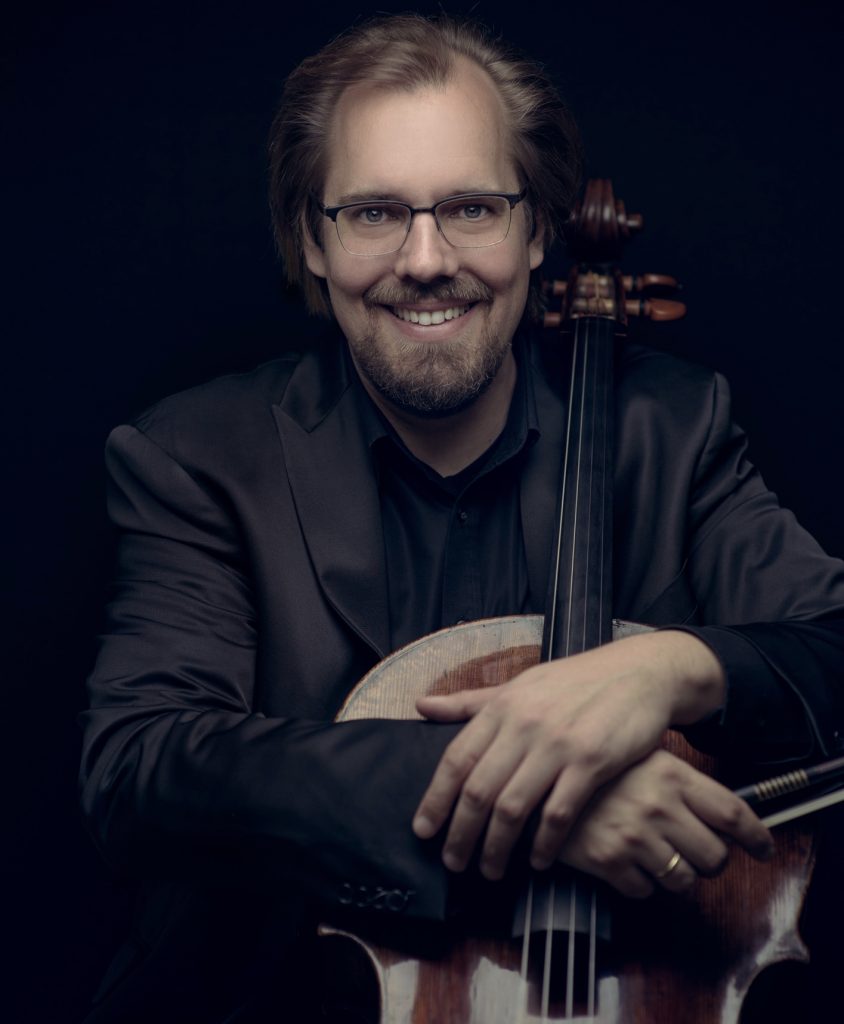Dvořák’s towering Cello Concerto gets a fresh reading from DSO and Schmidt

The literature for solo cello and orchestra is not as large as those for violin or piano. But within the more narrow genre, few if any pieces are more highly regarded or regularly performed than Dvořák’s Cello Concerto in B minor. Like his “New World” symphony, the concerto hails from the Czech composer’s period in America, but is tinged with homesickness and longing.
Wolfgang Emanuel Schmidt’s performance of the piece, with Marek Janowski conducting the Dallas Symphony Orchestra Thursday night, marked the second time the Meyerson Symphony Center has seen this Dvořák juggernaut in two years. Yo-Yo Ma’s rendition, led by Jaap van Sweden for the 2017 DSO gala, was lauded as an apt collaboration. But Schmidt and Janowski managed for their part to draw out new colors and moods from this orchestral standby.
Janowski guided the orchestra ably through the opening of the first movement: The 80-year-old Wagnerian conductor’s swing of the baton was authoritative and buoyant, and laid a balanced foundation of robustness and finesse for the soloist.
Schmidt entered with gusto, nailing the heroic triple stops of his opening phrase and leaning into the melody with weight— a little too much weight in parts of the first movement. But Schmidt also demonstrated impressive agility with his rapid string crossings. His interpretations were full and virtuosic, with the proper amount of moodiness, if occasionally rushed and a tad ahead of the orchestra.
The second movement — which quotes Dvořák’s own “Lasst mich allein” as an elegy to the sister-in-law he had once been in love with — was dramatic and tender. Schmidt’s animated playing turned appropriately somber during the middle section, where the lamenting melody moves at a melancholy narrative gait. Solo phrases from principal flautist David Buck added lovely compliment to Schmidt’s warm, mournful strings.
Here, Janowski did well to shade the horns and brass with darkness and depth in the main theme, a quality that carried over to the opening of the final movement. The Allegro moderato was given lift and bounce by the orchestra, and Schmidt responded in kind: His sensitivity in the higher registers of his instrument, in the lead-up to the finale, was audible in his effective crescendos and energetic vibrato. Janowski led the entire ensemble to a triumphant, exclamatory close.
Robert Schumann’s Second Symphony in C major anchored the second half of the program. The four-movement work was written amid the plague of physical and mental maladies that would consume the composer just over a decade later.
The first movement opened with a gloomy, gray shrouding from the horns before flowing into brighter swaths of color in the strings. The latter were responsive and light, with an awakening effect in the staccato declarations. While the Scherzo of the second movement felt rushed, the strings correctly remained the focal point of Janowski’s textured interpretation. Playing with a coordinated ring that rose and fell along dark legato lines, they advanced to a bold finish.
The Adagio is arguably the most beautiful of all the slow movements in Schumann’s symphonies. Lovely phrasing from the woodwinds gave this Adagio a welcome pastoral polish, while the brass section maintained a tempered brightness underneath. The shift of focus during the fugal episode from one instrumental grouping to the next was smartly done, and showcased the orchestra at its most tonally cohesive and expressive.
In stark contrast to the conclusion of the preceding Adagio, the final movement opened with brilliant fanfare. Janowski’s advocacy of Schumann’s big, audacious writing was well-received by every section of the orchestra, with the tempo leaning just a hair above vivace until the lush, lyrical middle.
The program will be repeated 7:30 p.m. Friday and Saturday, and 2:30 p.m. Sunday at Meyerson Symphony Center. mydso.com; 214-305-6217.